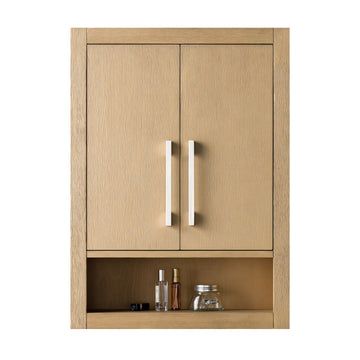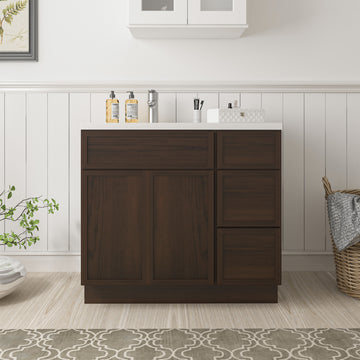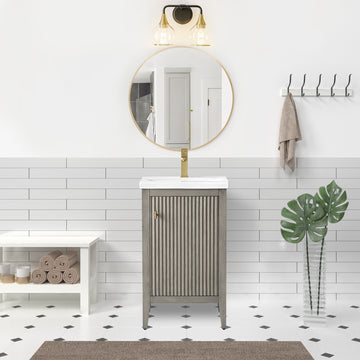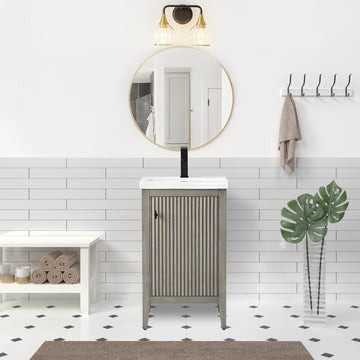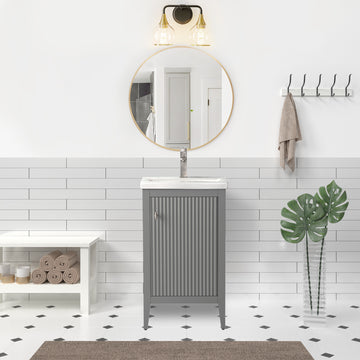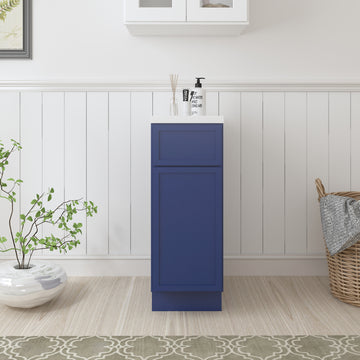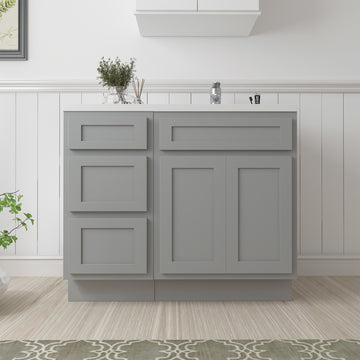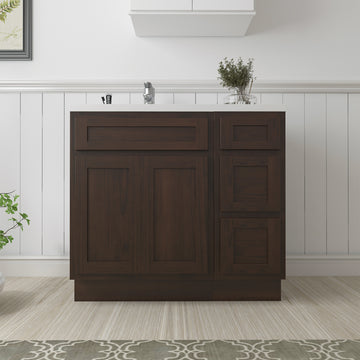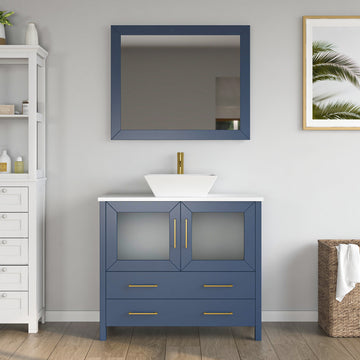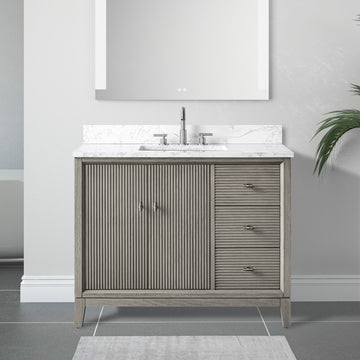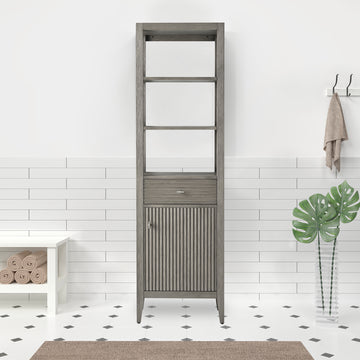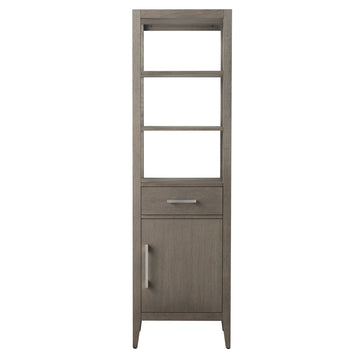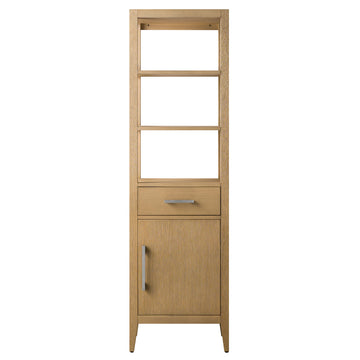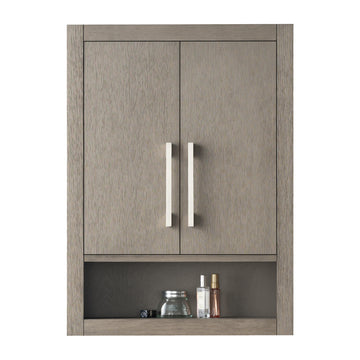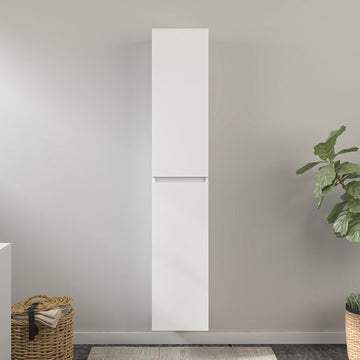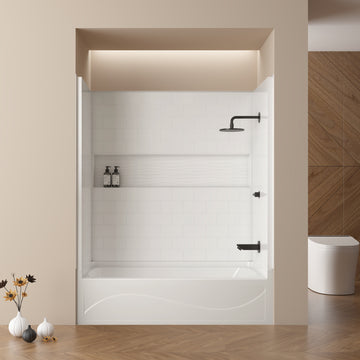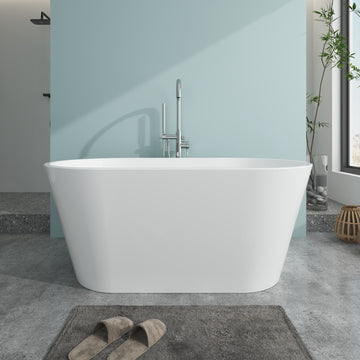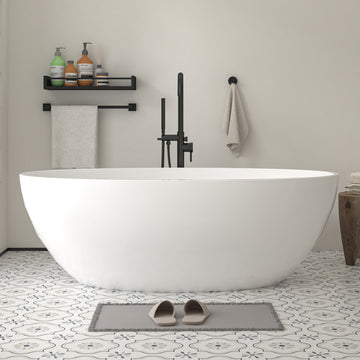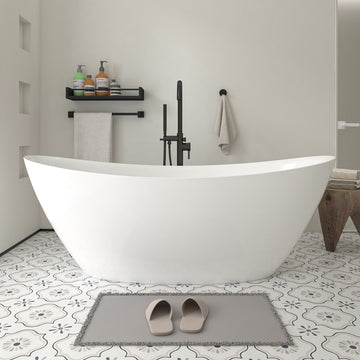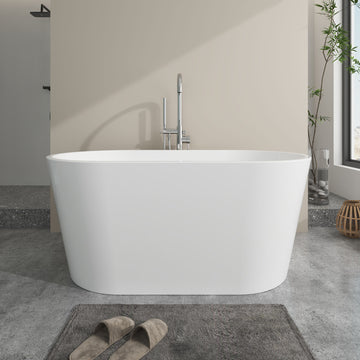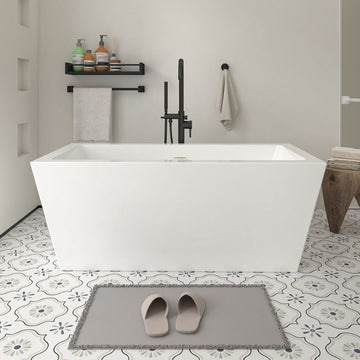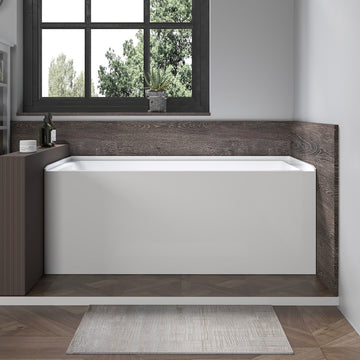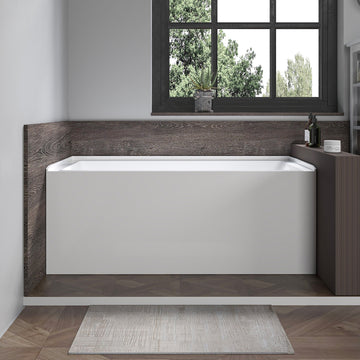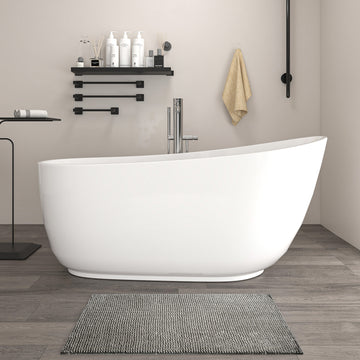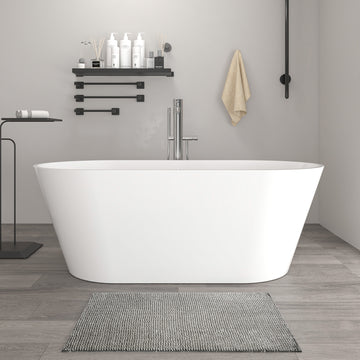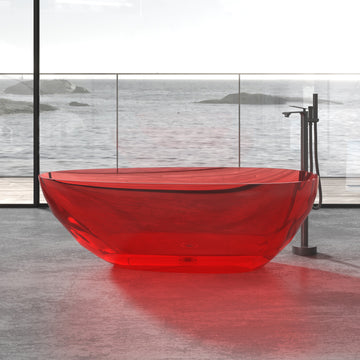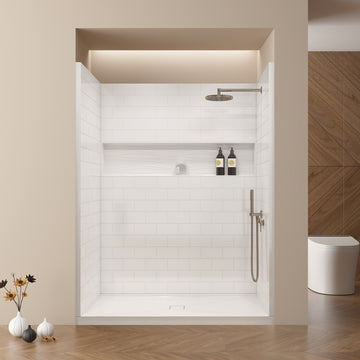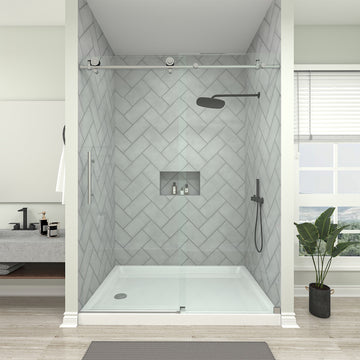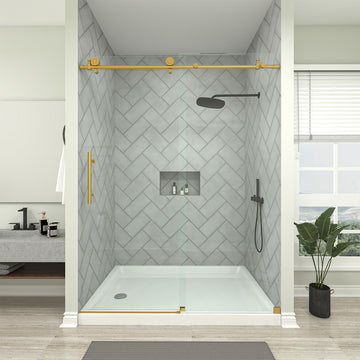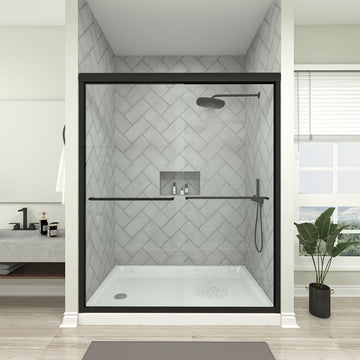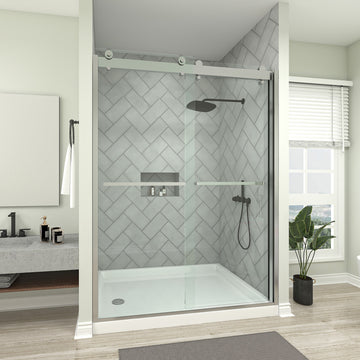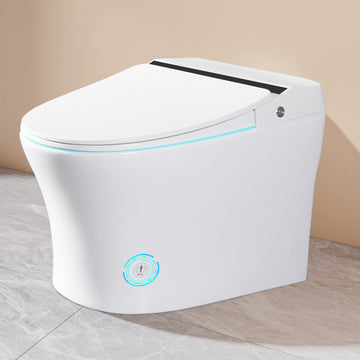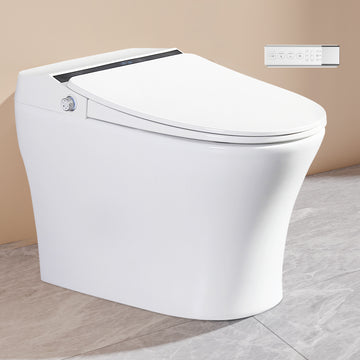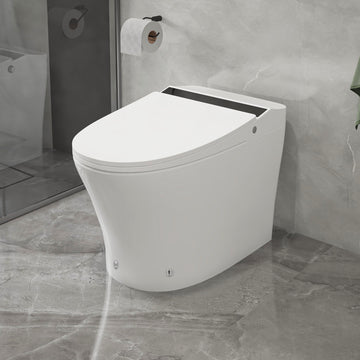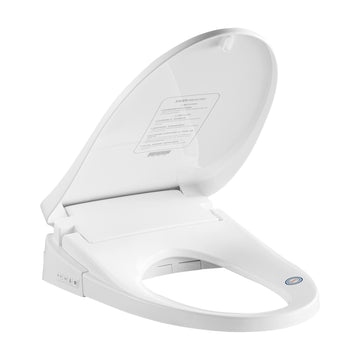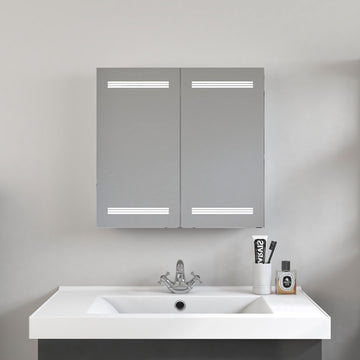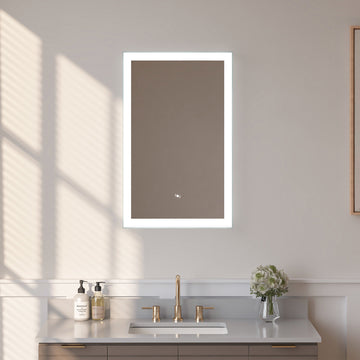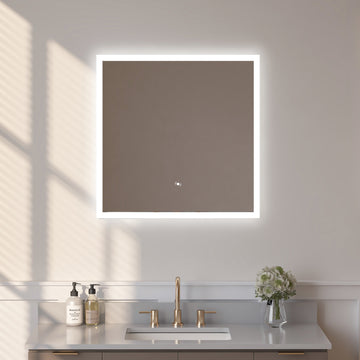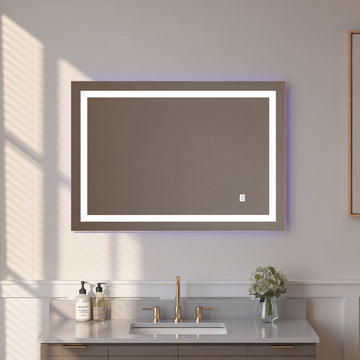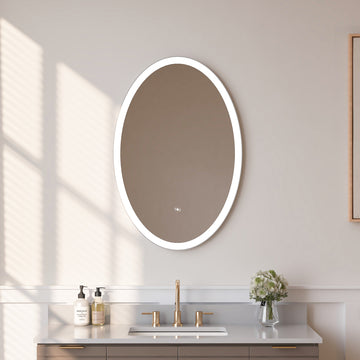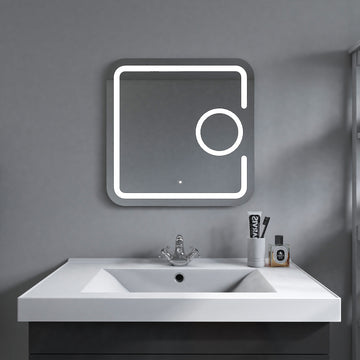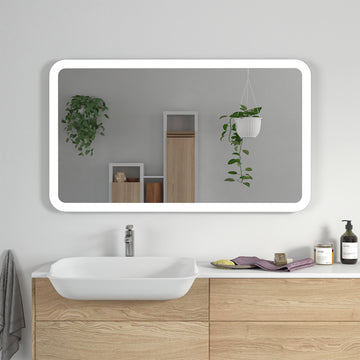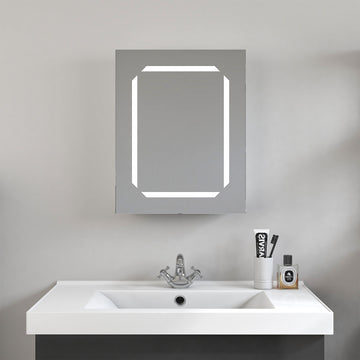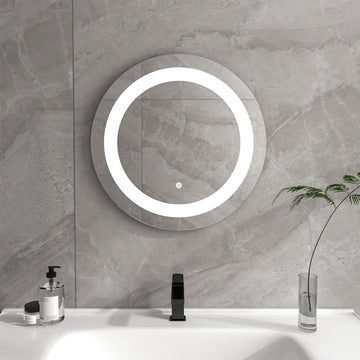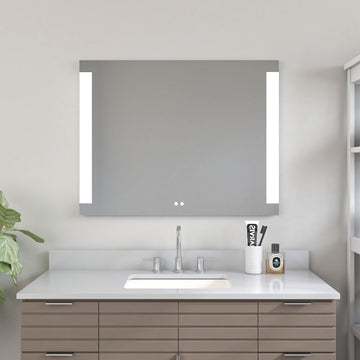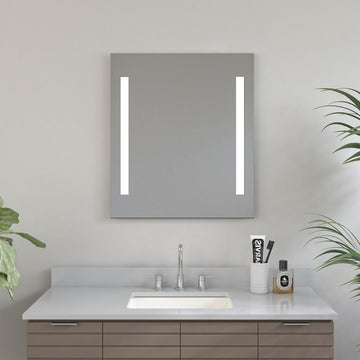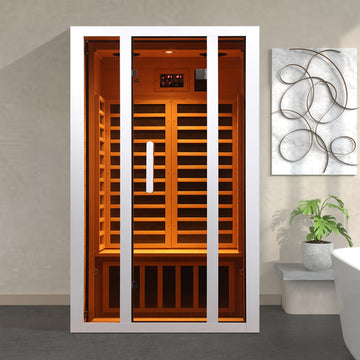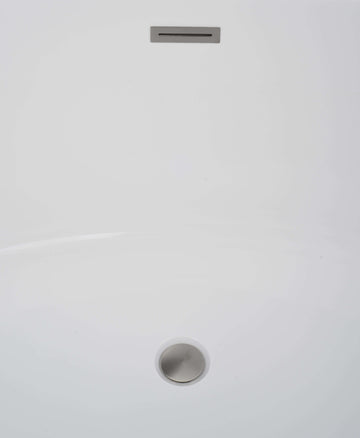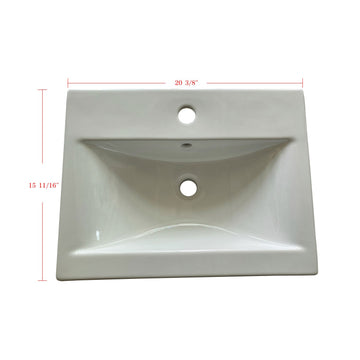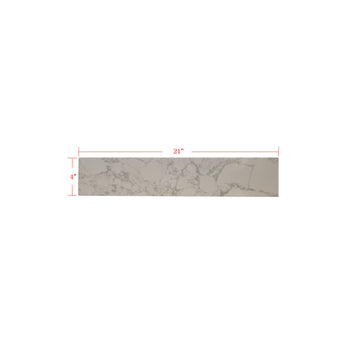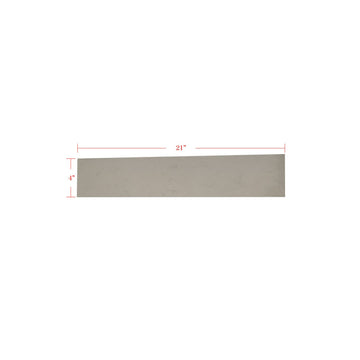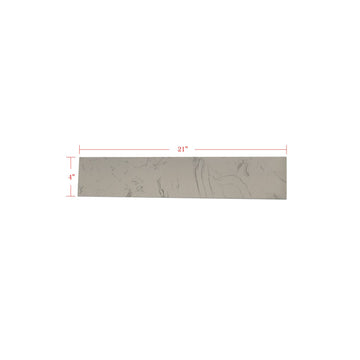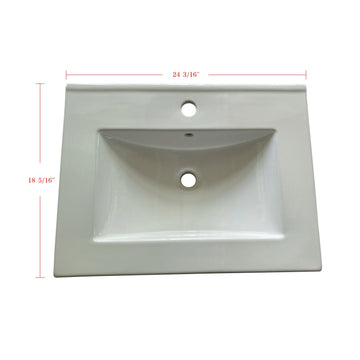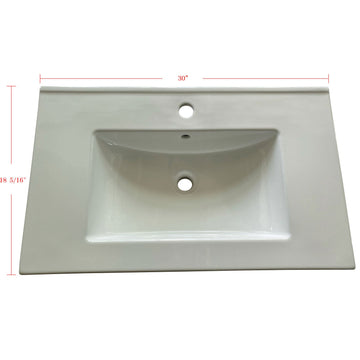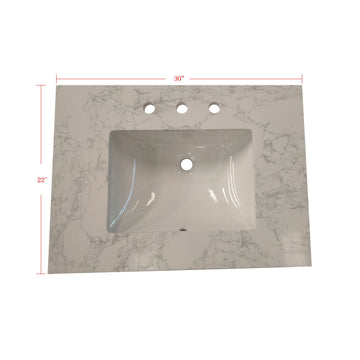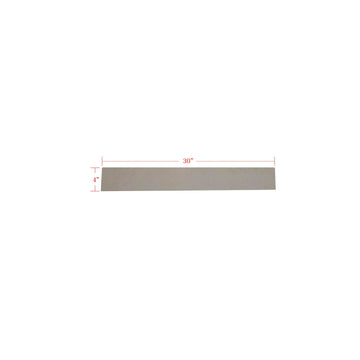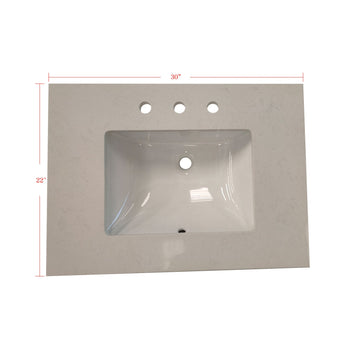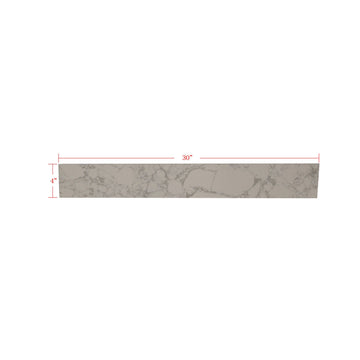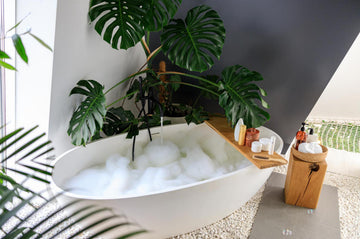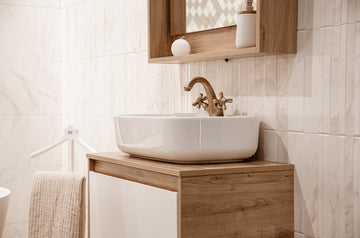Vessel sinks are a distinctive choice in both modern and transitional bathroom designs. Unlike traditional sinks that are set into the countertop, vessel sinks sit fully or partially above it. Often taking the shape of a bowl or basin. Their raised profile gives them a sculptural, eye-catching quality that many homeowners find appealing.
That said, they’re not just about looks. Vessel sinks come with their own set of considerations, from vanity compatibility and faucet height to installation details and everyday usability. In this guide, we’ll walk through what to know before choosing one: how they stack up against other sink styles, and the subtle design trade-offs that are easy to overlook.
What exactly is a vessel sink?
A vessel sink sits on top of the vanity rather than being set into it, which makes the entire basin visible and often a focal point in the room. Many are shaped like round or oval bowls, but you’ll also find rectangular, square, and more sculptural designs—especially in modern bathrooms. Their elevated profile gives them a distinct presence that sets them apart from more traditional sink styles.
Unlike undermount or drop-in sinks, vessel sinks are designed to be purchased and installed separately from the vanity. When a vanity comes with a vessel sink, it’s usually a freestanding or floating style that’s already adapted for the height and plumbing requirements of a raised basin. But vessel sinks can also be installed onto existing vanities, provided you adjust the height and plumbing to accommodate the sink’s elevated profile.
It’s important not to confuse vessel sinks with pedestal sinks or semi-recessed sinks. Vessel sinks are defined by their placement above the countertop, with very minimal (if any) recessed surface area. This unique positioning gives them a sculptural presence, but it also influences how you design around them. Faucet height, counter clearance, and splash prevention all come into play.
Overall, vessel sinks combine visual impact with a level of customization that appeals to those looking to add personality to their bathroom. But this style comes with its own set of design considerations, which we’ll unpack throughout the rest of this article.
Features of a vessel sink

A vessel sink stands out for both its appearance and installation style. Unlike undermount or drop-in sinks that are integrated into the vanity top, vessel sinks are installed on top of the counter, with only a small drain hole connecting them to the plumbing. This structural difference gives them a distinctive, often sculptural look that immediately draws attention.
Aesthetic
One of the most notable features of a vessel sink is its design versatility. Vessel sinks are available in a wide range of materials. This gives you more stylistic freedom than most traditional sink options. Whether you want something modern and minimalist or rustic and artisanal, there's likely a vessel sink that fits your vision.
Height and ergonomics
Because vessel sinks sit on top of the counter, they can add several extra inches of height to the vanity. This makes them ideal for shorter vanities, or for people who prefer less bending. However, this can be a drawback if not measured carefully. Installing a vessel sink on a standard-height vanity might result in a sink that’s uncomfortably tall for daily use, especially for children or shorter users.
Faucet requirements
Vessel sinks typically require taller faucets or wall-mounted faucets, since the basin rises above the counter. This adds to the visual drama of the sink setup, but it also means you need to plan plumbing carefully. Especially if retrofitting a vessel sink onto an existing vanity.
Cleaning and splash control
Vessel sinks are usually easier to clean around, since there’s no rim or lip around the sink to trap grime. However, they can be more prone to splashing, especially if paired with a high-pressure faucet or one that’s poorly matched to the sink’s depth and shape.
Pros
-
Design flexibility: Available in a wide range of materials and shapes.
-
Visual impact: Creates a focal point in the bathroom.
-
Easy installation: Especially for countertop replacements, as it doesn’t require cutting out a large hole.
-
Ideal for shorter vanities: Adds height where needed without changing the base furniture.
-
Easy to clean around: The exposed base of the sink leaves fewer areas for buildup.
Cons
-
Height: Can be too tall if not paired with a low enough vanity.
-
Splash: Some models and faucet combinations can lead to more mess.
Faucet compatibility: Requires taller or wall-mounted faucets, which may limit your options. -
Stability: Less secure than undermount sinks, particularly with heavy materials if not installed properly.
-
Cleaning inside edges: Some designs with tight curves or textured surfaces can be harder to clean thoroughly.
Vessel sinks offer striking design appeal, but their functionality depends heavily on the way they're integrated into your bathroom setup. The next sections will look into how they compare to other sink types. And whether the tradeoffs are worth it for your specific space.
Vessel sink vs. other sinks
When choosing a bathroom sink, it often comes down to three commonly used types: vessel, undermounted, and pedestal sinks. Each has its own design logic, installation approach, and practical implication. And the right choice depends on how you balance aesthetics with function.
Undermounted sinks
Undermounted sinks are the most common in modern bathrooms. They are installed beneath the countertop, creating a smooth, flush surface. This installation style makes them highly functional and easy to clean, as there are no edges where grime can collect.
These sinks are ideal for high-traffic bathrooms and family use. They’re practical, unobtrusive, and easy to integrate with standard vanity setups. The streamlined appearance allows for more counter space and less splash risk. However, installation is more complex and usually requires professional fitting, especially with stone or solid-surface countertops.
Pedestal sinks
Pedestal sinks are freestanding units that combine the sink basin with a floor-mounted pedestal beneath it. They’re a go-to option for small bathrooms, especially in older homes or those going for a classic look.
Because there’s no countertop or cabinetry, pedestal sinks offer the least storage but the smallest footprint. They’re easier to install than undermounted sinks but offer far less surface area to place items. This makes them best suited for powder rooms, half-baths, or vintage-style renovations.
Summary
|
Feature |
Vessel Sink |
Undermounted Sink |
Pedestal Sink |
|
Installation |
Easiest to install |
More complex, needs support |
Moderate difficulty |
|
Storage Compatibility |
Sits on a vanity |
Fully integrates with vanity |
No storage or counter |
|
Cleaning Ease |
Easy around the base, less inside |
Very easy, flush surface |
Moderate; some tight corners |
|
Counter Space |
Reduced |
Maximized |
None |
|
Common Use Cases |
Designer bathrooms, vanities |
Everyday use, family bathrooms |
Small bathrooms, vintage styles |
|
Splash Risk |
Higher unless deep |
Low |
Moderate |
If you’re working with an existing vanity or prefer a bold, design-led aesthetic, a vessel sink offers flexibility and flair. For those prioritizing convenience and daily practicality, undermount sinks are hard to beat. And if you're short on space or going for a timeless look, a pedestal sink might still have a place in your bathroom.
How to assemble vessel sinks
Vessel sinks offer visual appeal and adaptability, making them an ideal upgrade for vanities you already own. Whether you’re retrofitting a freestanding cabinet or modifying a countertop, the installation process isn’t overly complicated. But it does require careful planning, especially around faucet height, drain alignment, and structural support.
Step 1: check vanity height and structure
Before installation, ensure your existing vanity isn’t too tall. Because vessel sinks sit on top of the countertop (rather than inside it like undermount or drop-in sinks), the combined height of the vanity and the vessel may result in a basin that's too high to use comfortably.
-
Ideal counter height for vessel sinks is typically around 30–32 inches.
-
Ensure your vanity’s surface is strong and level. Solid wood or stone is ideal. Avoid particleboard or surfaces prone to warping.
Step 2: choose the right faucet
You’ll need either a tall vessel faucet or a wall-mounted faucet that extends well above the rim of the sink. A standard height faucet won’t provide enough clearance.
-
Ensure the faucet spout is positioned so that the water falls near the center of the sink basin.
-
Double-check the spout height and reach in relation to the sink’s overall depth and width.
Step 3: mark the drain hole
Most vessel sinks have a centered drain hole. If your vanity already has a hole from a previous sink, check if it lines up with the vessel sink’s drain. If not, you may need to drill a new one.
-
Use the sink as a template to mark the drain hole on the vanity top.
-
Ensure proper placement so the sink will sit centered and stable on the vanity.
Step 4: drill the countertop if needed
If your existing vanity doesn’t have a hole or if you need to adjust its placement, you’ll need to drill a 1.5"–2" hole through the countertop to accommodate the drain pipe.
-
Use a hole saw compatible with your countertop material (wood, stone, quartz, etc.).
-
Smooth out the edges of the hole to prevent damage to plumbing components.
Step 5: install the drain
Feed the drain tailpiece through the sink and into the hole in your vanity. Use a bead of plumber’s putty or silicone sealant under the sink’s drain flange to create a watertight seal.
-
Tighten the drain nut from underneath, being careful not to over-tighten and crack the sink if it’s porcelain or glass.
-
Attach the drain to your P-trap plumbing under the sink.
Step 6: set the sink in place
Some vessel sinks are secured with silicone adhesive around the base to prevent movement. Others are heavy enough to simply rest in place.
-
Apply a small bead of clear silicone around the base if needed.
-
Press the sink gently into place and wipe away excess sealant.
-
Allow to cure for 12–24 hours before running water into the sink.
Step 7: install the faucet if it’s not wall-mounted
If your faucet is deck-mounted, you’ll need to drill a hole in the vanity or countertop. Follow manufacturer instructions for the diameter and spacing.
-
Connect the water supply lines and tighten the fittings.
-
Test for leaks before finishing the install.
Final checks
-
Run water to ensure drainage is smooth and there are no leaks.
-
Confirm the sink is level and doesn’t wobble.
-
Check that the faucet reach hits the right part of the sink.
Note
Vessel sinks tend to splash more if paired with the wrong faucet or mounted too high. To reduce splash:
-
Use a deeper sink bowl.
-
Choose a faucet with an aerator to slow water flow.
-
Make sure the faucet spout doesn’t pour too close to the edge of the basin.
Assembling a vessel sink onto your existing vanity isn’t overly complex, but it requires smart planning and some light carpentry or plumbing skills. Done right, it gives your bathroom an elevated, modern feel.
Final thoughts on vessel sinks

Vessel sinks offer a bold, sculptural presence in any bathroom. Whether you’re aiming for modern minimalism or a more artistic, spa-like atmosphere. While they do come with design considerations like added height and splash control, they remain a favorite for homeowners and designers looking to create a visual statement.
If you're planning to integrate a vessel sink into your vanity setup, it's crucial to get the measurements, faucet placement, and installation details right from the start.
Ready to refresh your bathroom? Browse our collection of vanities and sinks to find the right combination that suits both your taste and your space.
FAQs
What are the standard vessel sink sizes?
Vessel sinks come in a wide range of sizes to suit different vanities and spaces. The typical diameter for round vessel sinks ranges from 14 to 20 inches, while rectangular or oval designs can go up to 24–30 inches wide. Depth is usually between 4 to 6 inches (not including how high the bowl sits above the counter). Keep in mind that taller sinks can affect faucet compatibility and usability, so it's important to balance sink height with vanity height.
Can I install a vessel sink on a freestanding vanity?
Yes. In fact, freestanding vanities are often paired with vessel sinks, especially in more traditional or transitional bathroom designs. Since freestanding vanities rest on the floor, they tend to be shorter in height, which offsets the additional height of a vessel sink bowl. This makes them ergonomically more comfortable to use.
What’s the difference between a freestanding vanity and a floating vanity with a vessel sink?
-
Freestanding vanities are floor-mounted and often come with more storage space in drawers or cabinets. They are easier to install, especially for retrofits or remodels.
-
Floating vanities are wall-mounted and give a cleaner, minimalist look. When paired with a vessel sink, they help open up floor space and make smaller bathrooms feel less crowded. But they require sturdier wall support and more planning during installation.
Both work well with vessel sinks, but you'll need to adjust mounting height accordingly. Floating vanities should be mounted lower than traditional vanities if you're planning to add a vessel sink on top.
Are vessel sinks a good fit for small bathrooms?
They can be, but it depends on the design. While vessel sinks save countertop space, their tall profile may visually crowd very small bathrooms if not balanced with the right vanity or wall finish. Shallow, compact vessel sinks paired with floating vanities are often the most space-efficient combination.
Can I add a vessel sink to a vanity that already has a countertop hole?
Yes. If the hole is in the right place and size. Vessel sinks typically only need one hole for the drain (no rim cutout like undermount sinks). If you're reusing a countertop, you may need to patch or cover old holes, or choose a sink that aligns with the existing placement.

